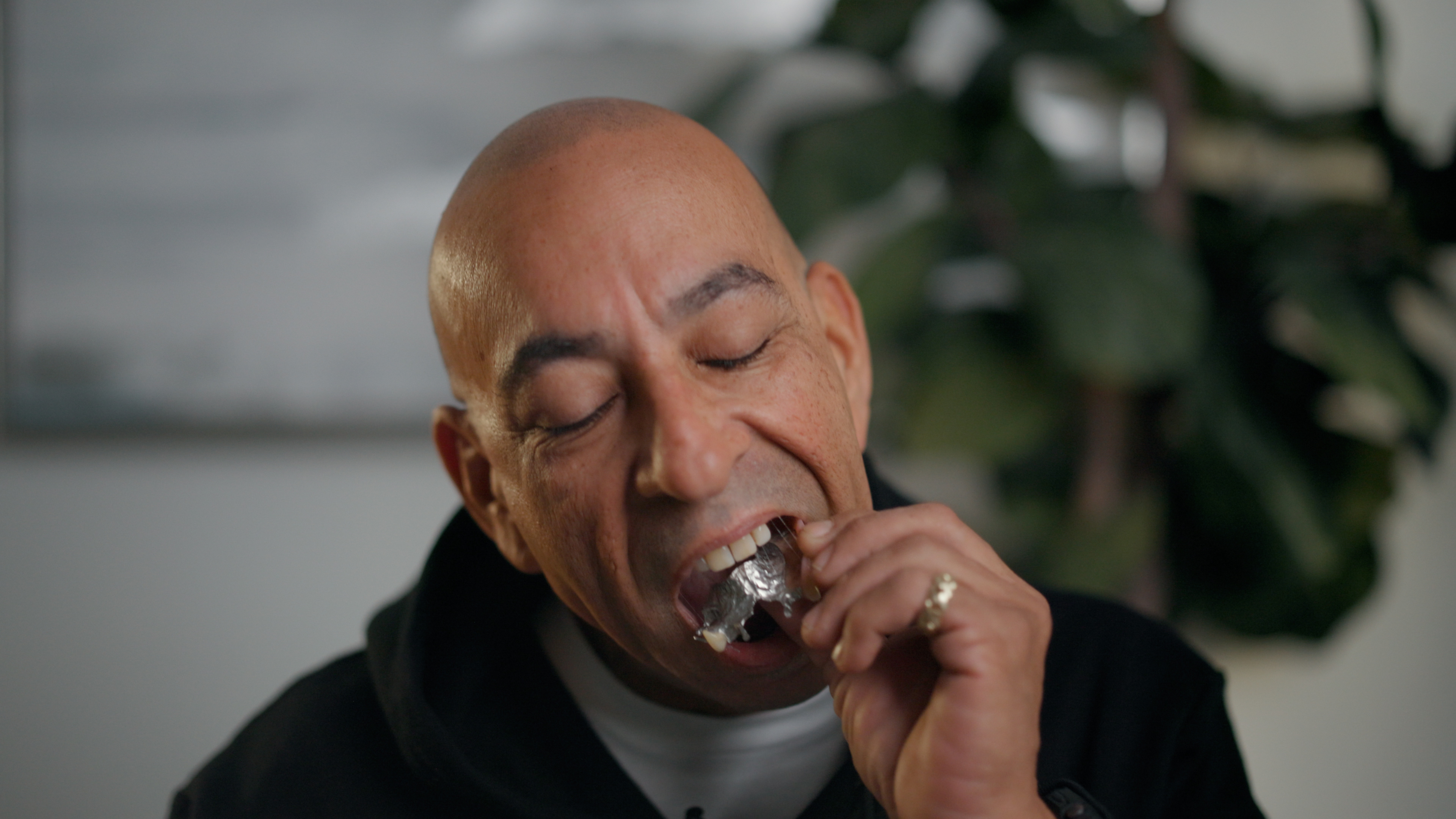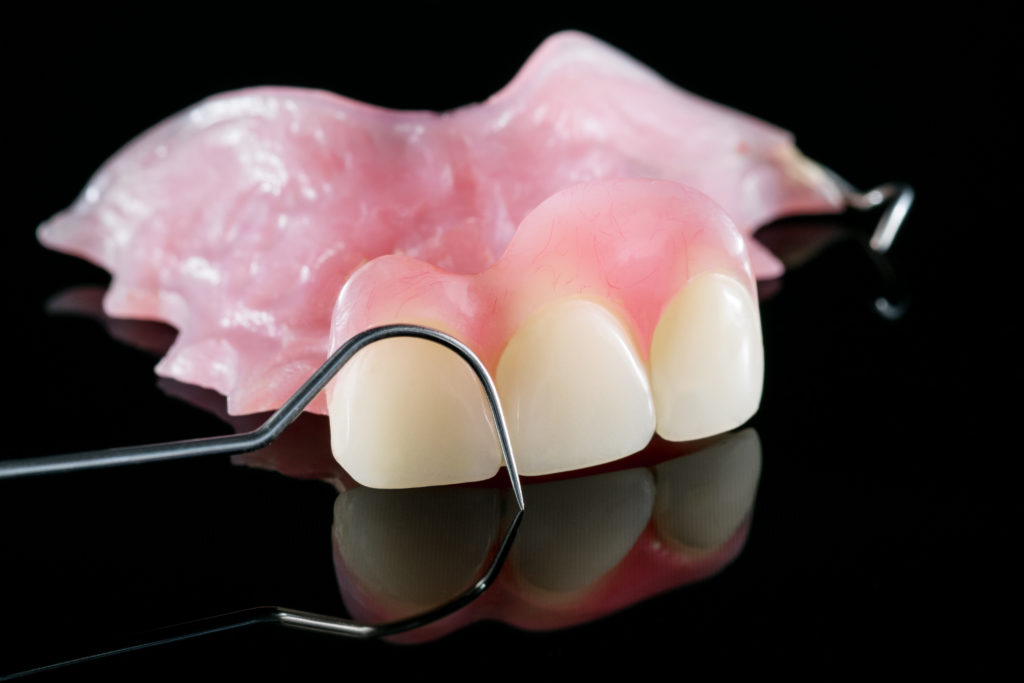When you lose one or more teeth, it’s not just your smile that changes — it’s your confidence, your bite, and sometimes even your life.
Suddenly, little things most people take for granted — like sharing a meal, laughing freely, or talking without worry — start to feel uncomfortable, even embarrassing.
Maybe you’ve tried a partial denture that never quite fits right.
One patient told us, “Sometimes I would spit when I talk. Or [the denture] would come loose and the glue, the adhesive at the end of the day, and the food getting stuck in my mouth. It was just I don't wish this on anybody…”
He’d spent thousands trying to make it work — metal clasps, adhesives, adjustments — but said it always felt like the “last piece” of his transformation was missing.
That’s the part nobody tells you: these “solutions” can become another source of frustration.
The good news? You have options — and understanding them helps you make the best long-term choice for your health, comfort, and confidence.
Two common short-term options are partial dentures and dental bridges. Both can fill gaps and restore your smile, but each comes with trade-offs in comfort, maintenance, and longevity.
And for people who’ve spent years living with loose dentures or painful bridges, finding something permanent — something that actually feels like you again — can be life-changing.
Let’s look at what makes them different — and why more patients today are choosing dental implants as a lasting alternative.
**Actual NUVIA patient(s) who may have been compensated for sharing their story. Not all those who come in for a consultation are eligible for this treatment. Results may vary in individual cases.
What Are Partial Dentures?
Partial dentures are removable appliances made of plastic, or a mix of metal and plastic, designed to replace several missing teeth.
Small clasps connect the denture to your remaining natural teeth to help keep it in place.
For many people, partial dentures seem like the most affordable, practical fix. But as Jeffrey told us, “It got to where these partial ended up costing me almost five thousand dollars, and it's just like heavy metal or I don't even know what material they are, but it was embarrassing. Sometimes I would spit when I talk. It's just or they would come loose.”
That’s the emotional cost most people don’t see — the quiet embarrassment, the constant worry when you laugh or eat in public.
Still, partial dentures can be a starting point for some people.
Pros:
- Usually an affordable upfront option
- No surgery required
- Can replace multiple teeth at once
Cons:
- May feel bulky or loose while speaking or eating
- Must be removed and cleaned daily
- Typically replaced every 5 years or more frequently
- Can place stress on healthy teeth used for support
- Adhesives can wear off, allowing food to get trapped underneath
- Doesn’t protect against bone loss
Over time, what starts as a “temporary fix” can become a daily frustration — slipping plates, sore gums, and the constant reminder that these aren’t your real teeth.
For many patients, partials eventually become the last straw before deciding to find a more permanent solution.

What Is a Dental Bridge?
A bridge “bridges” the gap between missing teeth using crowns placed on the teeth next to the space. Those crowns hold one or more false teeth firmly in place.
Unlike dentures, bridges are fixed — they stay in your mouth permanently, which can sound like a relief after struggling with something removable.
For many people, a bridge feels like a step up from dentures. It looks more natural, it doesn’t come in and out, and it lets you forget (for a while) that you ever lost a tooth.
But what most people don’t realize is that bridges require grinding down healthy teeth on either side of the gap — and that can weaken them over time.
It’s like robbing Peter to pay Paul: you fill one space, but compromise two perfectly good teeth in the process.
Pros:
- Feels more natural and secure than a removable denture
- Usually made of durable porcelain or ceramics
- Can restore your smile quickly
Cons:
- Requires reshaping (grinding down) healthy neighboring teeth
- Harder to clean between and around
- May need to be replaced every 7–10 years
- Doesn’t protect against bone loss beneath the missing tooth
- Can trap food particles near the gum line if not cleaned meticulously
While bridges can be a good short-term fix, they don’t stop the bone beneath your missing tooth from shrinking — and that bone loss is what could eventually change your face shape and smile over time.
Many patients who start with a bridge find themselves right back in the dental chair years later, wondering why the “permanent” fix didn’t last.

Dental Implants: The Permanent Solution That Lets You Eat, Laugh, and Smile Again
Dental implants don’t just replace missing teeth — they replace the feeling of having your own teeth again too.
Using All-on-4® or All-on-X® methods, dental implants are placed into the jaw bone to function as a foundation for a new full arch of zirconia teeth. This way, you get a stable, natural-looking smile that doesn’t slip, click, or come out at night.
For the first time in years, you can bite into a crisp apple, chew a steak, or laugh without covering your mouth.
Pros:
- Permanent, stable, and natural-looking
- Protects bone and facial structure
- Easy to care for — brush like normal and use a waterpik to floss
- Can last a lifetime with proper care
- All in one cost, one and done solution
- Restores oral health and function - you’ll never have a root canal again
Cons:
- Higher upfront cost than dentures or bridges (but can be financed and is often much more affordable than people think)
- Requires a surgical procedure (done by an experienced oral & maxillofacial surgeon)
Dr. Blen explains the difference between dentures and All-on-4® dental implants best:
“A regular denture, I compare this to McDonald's. You know, they’re widely available, and they can satisfy your hangover. However, while they serve the purpose, they might not always provide the most comfortable and long-lasting experience.
All-on-4® implants are like dining at a restaurant with a professional chef — because you can actually do so many things. You can eat what you want. You can tell them exactly what you need, and you get the best quality.”
And here’s what most people don’t realize — not all full mouth dental implant processes are the same.
Traditional “Teeth in a day”® methods can take months of waiting in temporary plastic teeth (“healing teeth”). But at Nuvia, patients receive their final, permanent zirconia teeth in just 24 hours after surgery — no waiting, no temporaries.
That’s the difference between another drawn-out dental process and finally waking up to a brand-new smile overnight.
Jeffrey said it best right before his procedure:
“I took the quiz. It was a sixty second quiz, and this is where I'm at. I'm here this morning because of that quiz. This is the best experience, the best feeling that you can have sitting here this morning waiting for my twenty four hour smile. Can't wait for tomorrow.”
The next day, he got his permanent teeth.
No plastic temporaries. No waiting. No uncertainty.
Nuvia’s approach is a proven process with a 99.13% documented success rate — helping patients move forward with a smile made to last.
*By the way, you can take the same quiz Jeffrey took here to see if you may be a candidate for full mouth dental implants.
.jpg)
Which Option Lasts the Longest?
While dentures and bridges can restore your smile for a few years, only dental implants are designed to replace teeth for the long term. Because implants are anchored directly in the jawbone, they act like real roots — preserving bone, preventing shifting, and helping your face keep its natural shape.
Many patients discover that dental implants may save time, money, and frustration in the years ahead by avoiding the cycle of repairs and replacements that often come with dentures and bridges.
And beyond the practical side — there’s something powerful about knowing your smile is truly yours again. No slipping plates. No replacements every few years. Just solid, confident teeth that let you eat, speak, and smile without a second thought.
There are countless patients like Jeffrey whose life has been changed by full mouth dental implants. If you’re ready for a permanent, lasting solution to failing or missing teeth, they may change your life too.
Take the 60-second quiz to see if you may be a candidate for permanent teeth in 24 hours — and take the first simple step toward your new smile.
Key Takeaways
- Dentures and bridges can restore missing teeth, but they’re not designed to last forever.
- Dental implants offer a secure, natural-looking solution that protects bone and lasts for decades.
- Understanding the pros and cons of each option helps you make a confident, informed decision for your smile.












.jpg)

.jpg)


